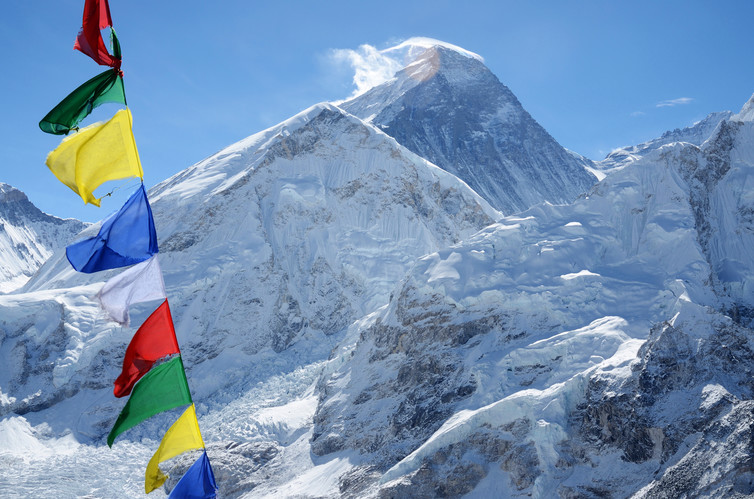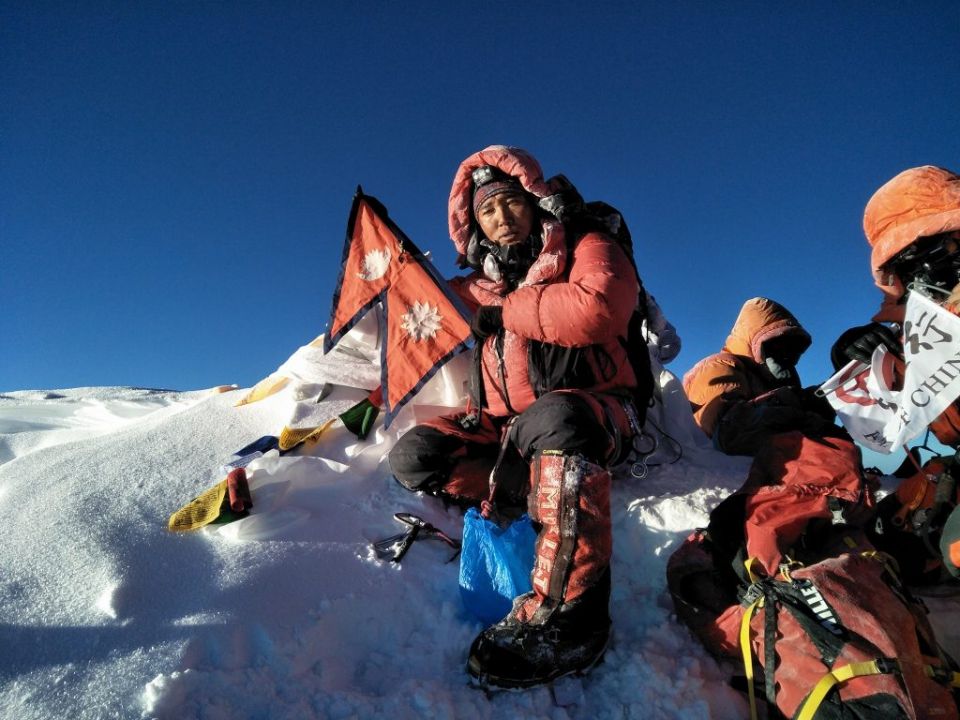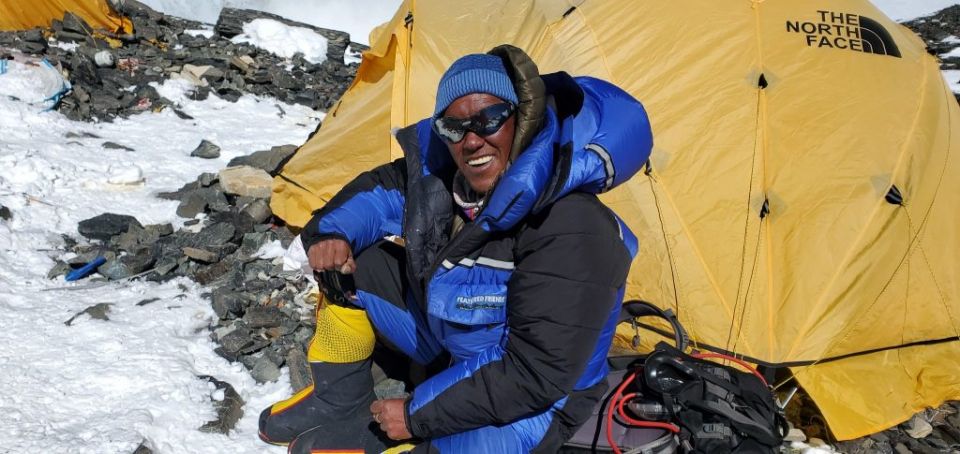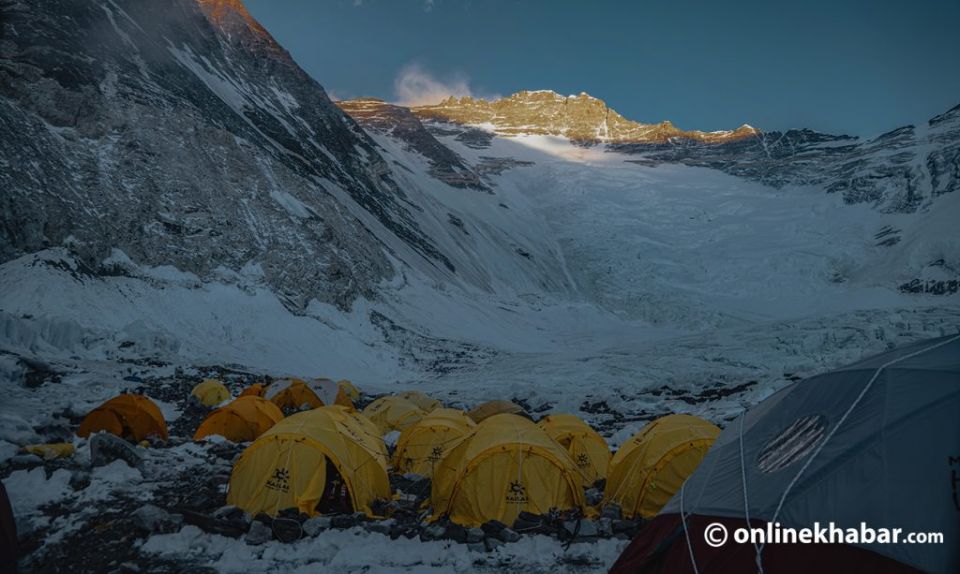
Pasang Dawa Sherpa and Ngima Nuru Sherpa are circumambulating the Bouddhanath Stupa. The two Nepali climbers stop at the Jamchen Lhakhang Monastery, light candles and burn incense. This has been their ritual every year before they climb Everest.
The two have climbed Everest 25 and 24 times respectively. During these accents, they have seen it all: deaths, accidents and triumphs. Their friends died in 2014 when an avalanche occurred at the Khumbu icefall and in 2015 when the earthquake triggered an avalanche at the base camp.
“A lot has changed, yet it’s constant that everything is so unpredictable in the mountains,” says Ngima Nuru.
For many, climbing Everest is a dream, an ultimate life goal. But for Pasang Dawa and Ngima Nuru, it is just a job. Over the past two decades, mountaineering in Nepal has evolved drastically and they two have seen it first-hand. They have seen how the gear has got better along with the technology. That is not all, they have also seen how Nepali climbers have evolved along with the impact global warming has had on the mountain and the challenges it has posed for them. But for the two, their role remains the same, take clients to the top of Everest and bring them back safely.
“Some things do not change,” Pasang Dawa.
Beginning the careers  Ngima Nuru Sherpa
Ngima Nuru Sherpa
These Nepali climbers started their careers in the late 90s in similar ways. Looking for jobs to make money, they two became trekking porters and then gradually made their way into the mountaineering scene initially by working in the base camp kitchen and then becoming climbing sherpas.
“Work was scarce back then. Unlike today, it was very hard to get into climbing, but we all knew the money was good,” says Ngima Nuru.
Like most people, money took them to the mountain, but that was not it, they two also wanted to climb because they wanted to follow in the footsteps of Tenzing Norgay and Edmund Hillary. They were also in awe of the gears that were used by their elders and always wondered if they would ever get a chance to climb like them.
Witnessing the change  Pasang Dawa Sherpa
Pasang Dawa Sherpa
Fast forward 20 years, and things have changed for these Nepali climbers. They feel things have changed for everyone not just them as the mountain has had a cultural change in the past two decades.
For starters, the base camp is a lot different to when they started, they say. The camp for a good part of their climbing careers was basic. The sleeping tents were normal, and the kitchen and dining tents were quite ordinary too.
But now, with service a key component of an expedition, things have changed. Ngima Nuru says there are now single rooms for clients who are willing to pay for them. These rooms have carpets and heaters and other amenities which in the 90s were unimaginable.
“The base camp is like a home and it has almost everything that a home does,” says Ngima Nuru.
That is not all, the kitchens and dining are well equipped too. Fresh meals fly in from Kathmandu every day on helicopters.
“There are ovens and coffee machines. Sometimes we are blown away by it too as it is really hard to take these items to base camp,” he says.
 Everest base camp Photo: Mingma Dorchi Sherpa
Everest base camp Photo: Mingma Dorchi Sherpa
An upgrade in quality has meant the Nepali climbers now sleep in better tents too. While they do not get individual rooms like their foreign clients, they still get top-quality tents tested in the mountains.
Camp 2 on Everest is similar to the base camp and that has also changed over time with clients seeking luxuries there too.
“If they want it, we have to give it. If not, they will go elsewhere,” says Pasang Dawa.
But even though the clients look for more service, the mindset of the clients remains the same, feel these Nepali climbers.
“They wanted to reach the top in 1999 and they want to reach the top in 2023. Nothing has changed in that aspect. Better technology has only made things easier for us,” adds Pasang Dawa.
Both agree that the quality of ropes, rock pitons, ice crew, shoes and down suits are a lot better than two decades ago.
“The gear has come a long way,” he says.
Impacts of the change  Camp 2 on Everest is located at 6,400 metres. Nepali climbers often make two rotations to camp 2 before their summit push.
Camp 2 on Everest is located at 6,400 metres. Nepali climbers often make two rotations to camp 2 before their summit push.
Better equipment and access to technology have also made it easier for Nepali climbers. Ngima Nuru says while they struggled a lot to get jobs, things are different now with over 400 clients climbing Everest every year.
He says the new generation of climbers in Nepal have better communication skills thanks to education which means they can guide foreign clients better. He also believes mountaineering schools and YouTube has helped the new generation get better at climbing too.
But that said, both feel that the future of Nepali climbers from the Sherpa community, that have been the backbone of Himalayan mountaineering, is looking bleak.
“Climbers now are not as desperate as we were when we started climbing. They will climb for a few years and stop. I would have stopped too, but this is all I know,” says Pasang Dawa.
These Nepali climbers say the work is demanding mentally and physically. Ngima Nuru recalls how he cried because he was helpless when he was unable to carry a bag full of oxygen cylinders which he was supposed to drop off at camp 4.
“Those early years were so tough but I was something I had to do to make sure my family had a good life,” he says.
Now with the two going to Everest to climb one more time, the Nepali climbers do not know when they will stop. While there is a trend to climb for records, the two do not have that on their mind. They have reached the top not caring about it and even to this day, they climb to ensure they support their family.
“The number is what it is, just a number. We will do it till our body can then we relax in our villages in Khumbu,” says Pasanga Dawa.











